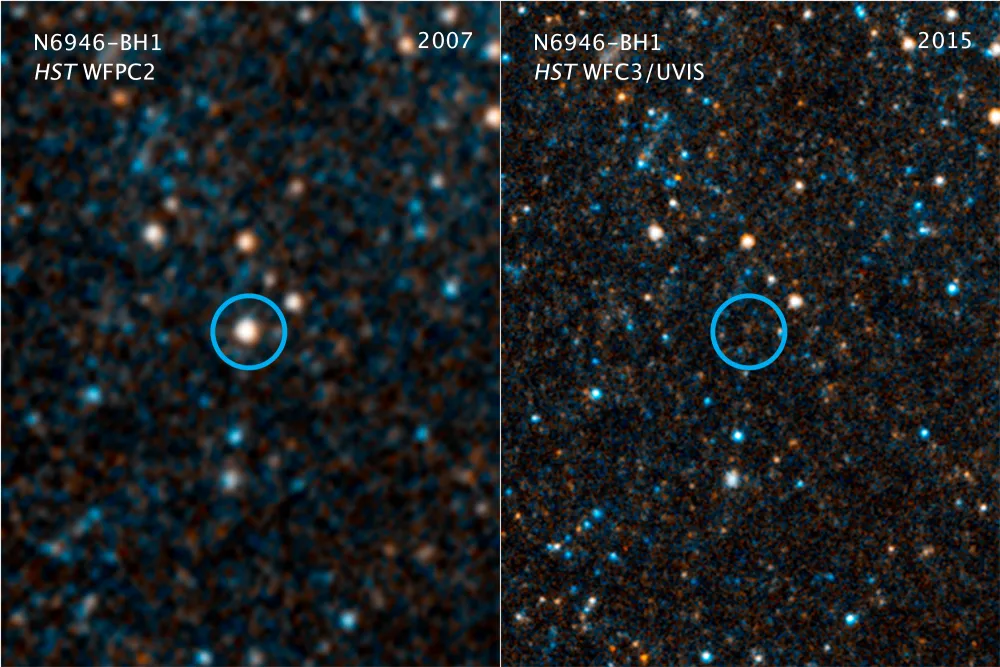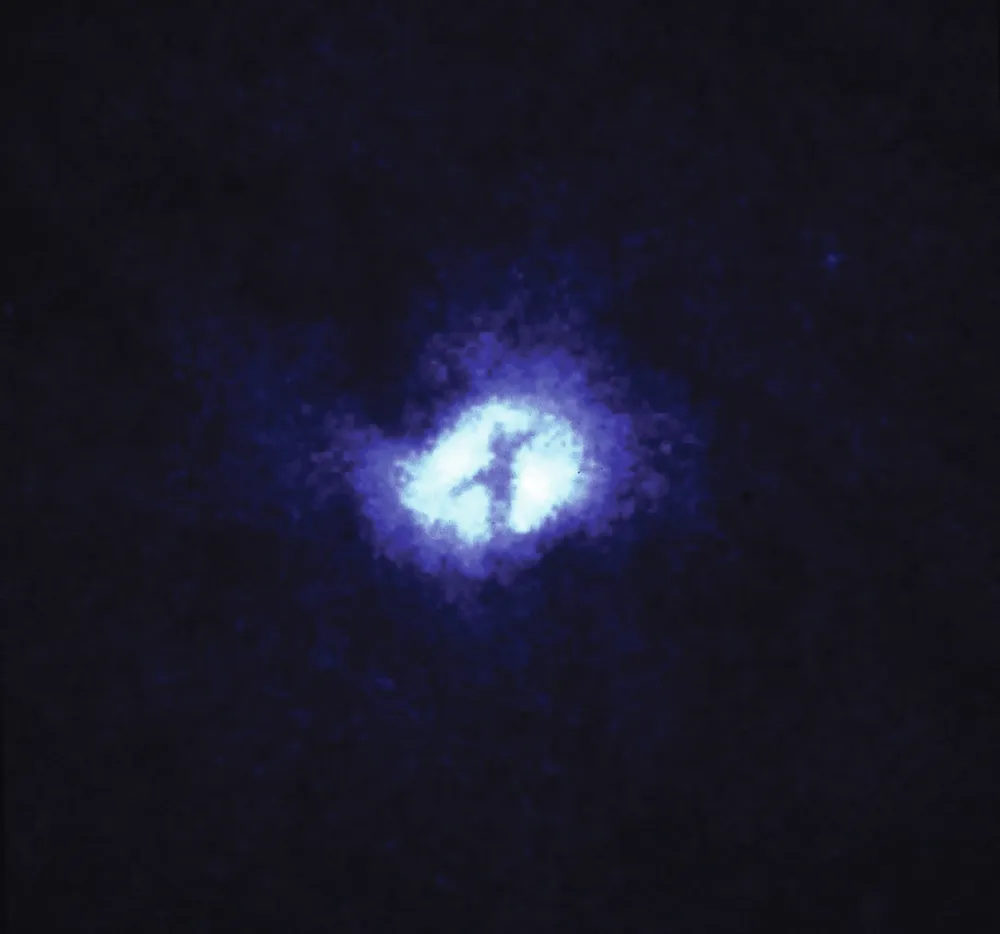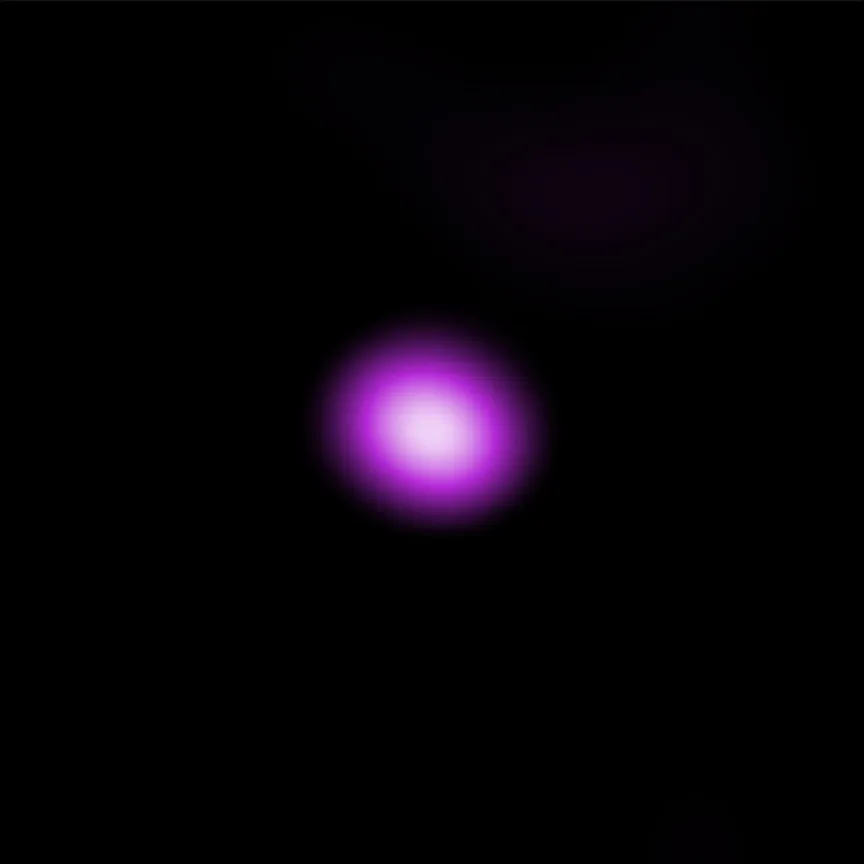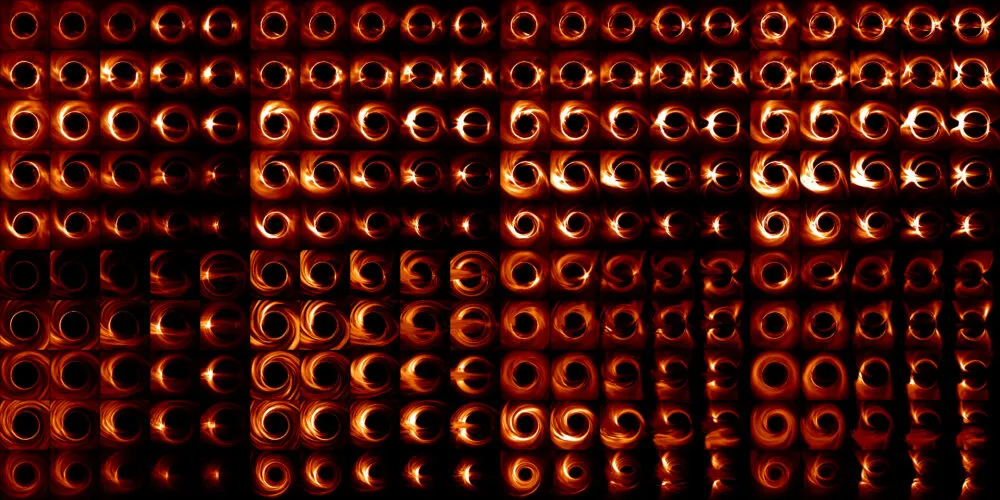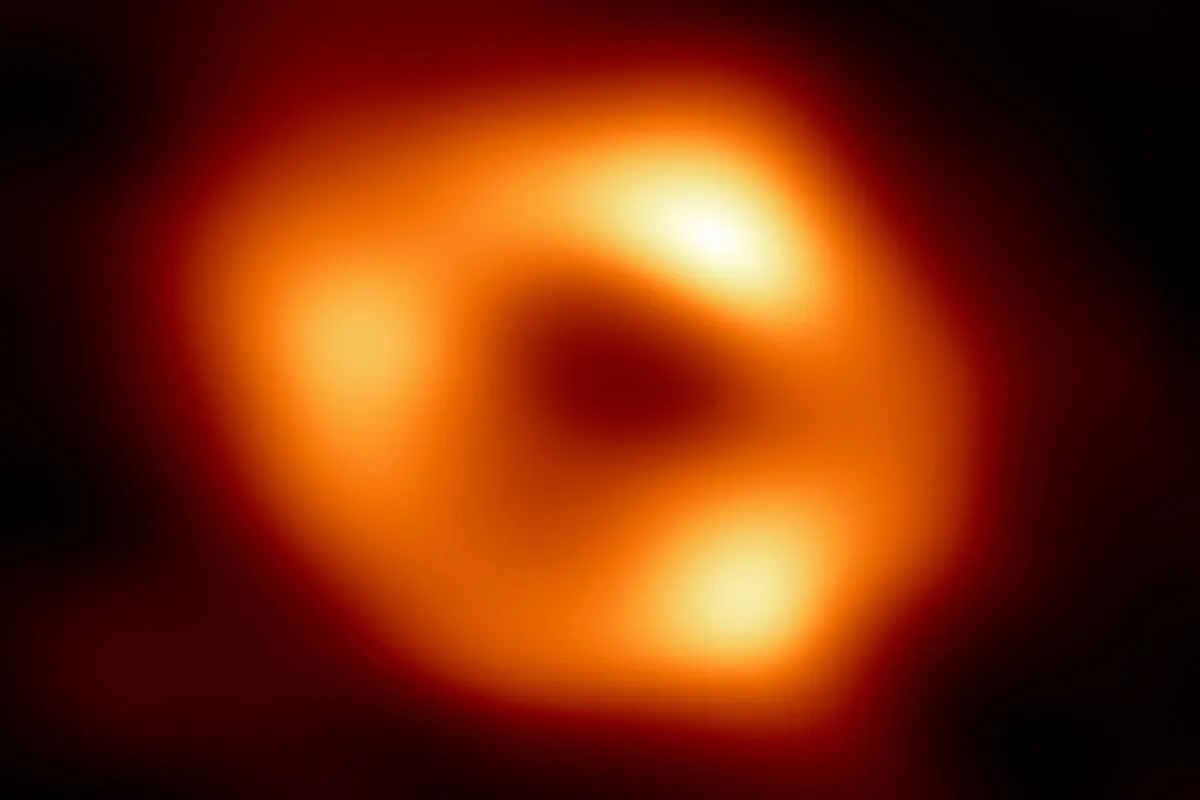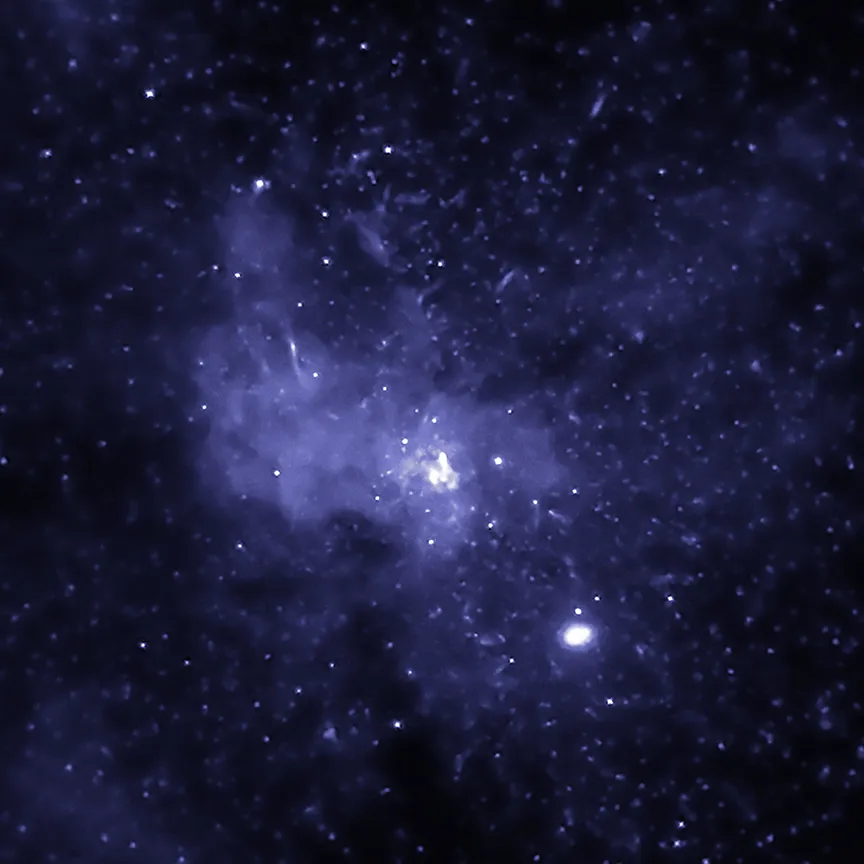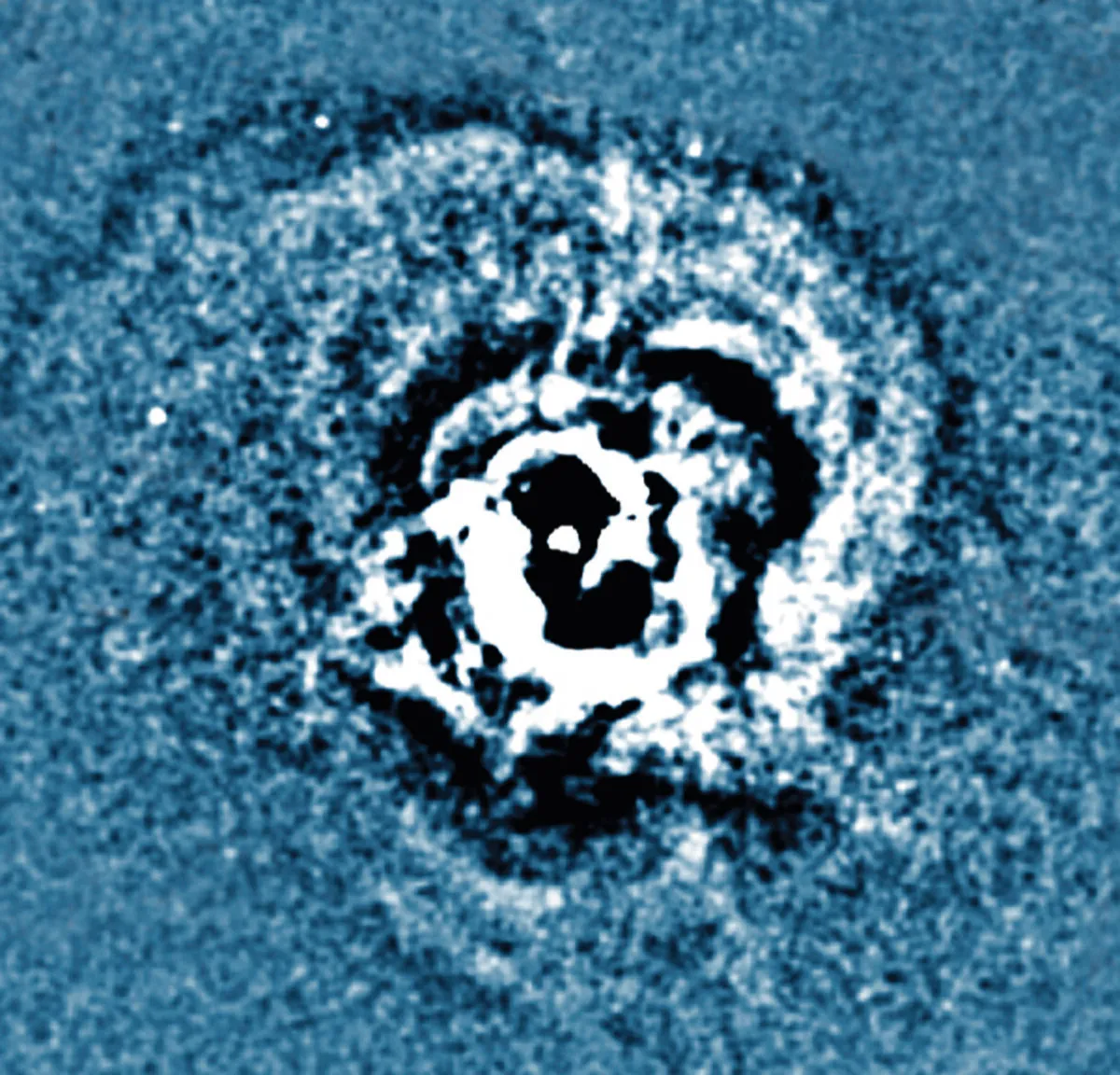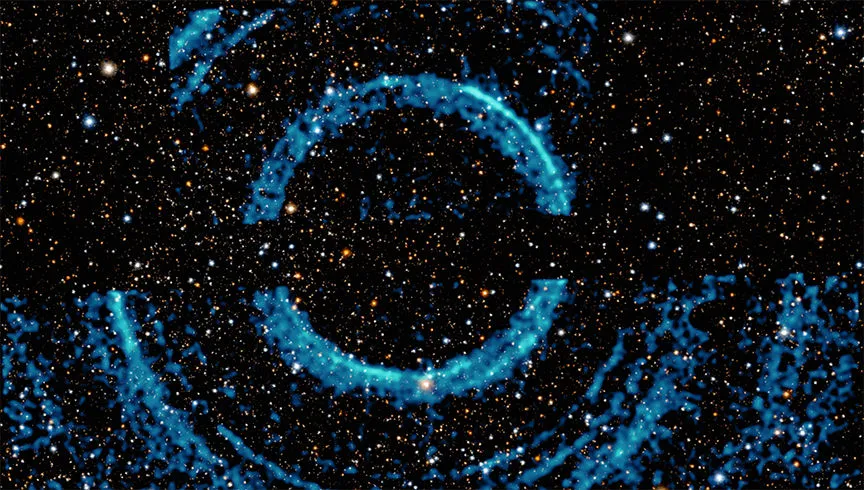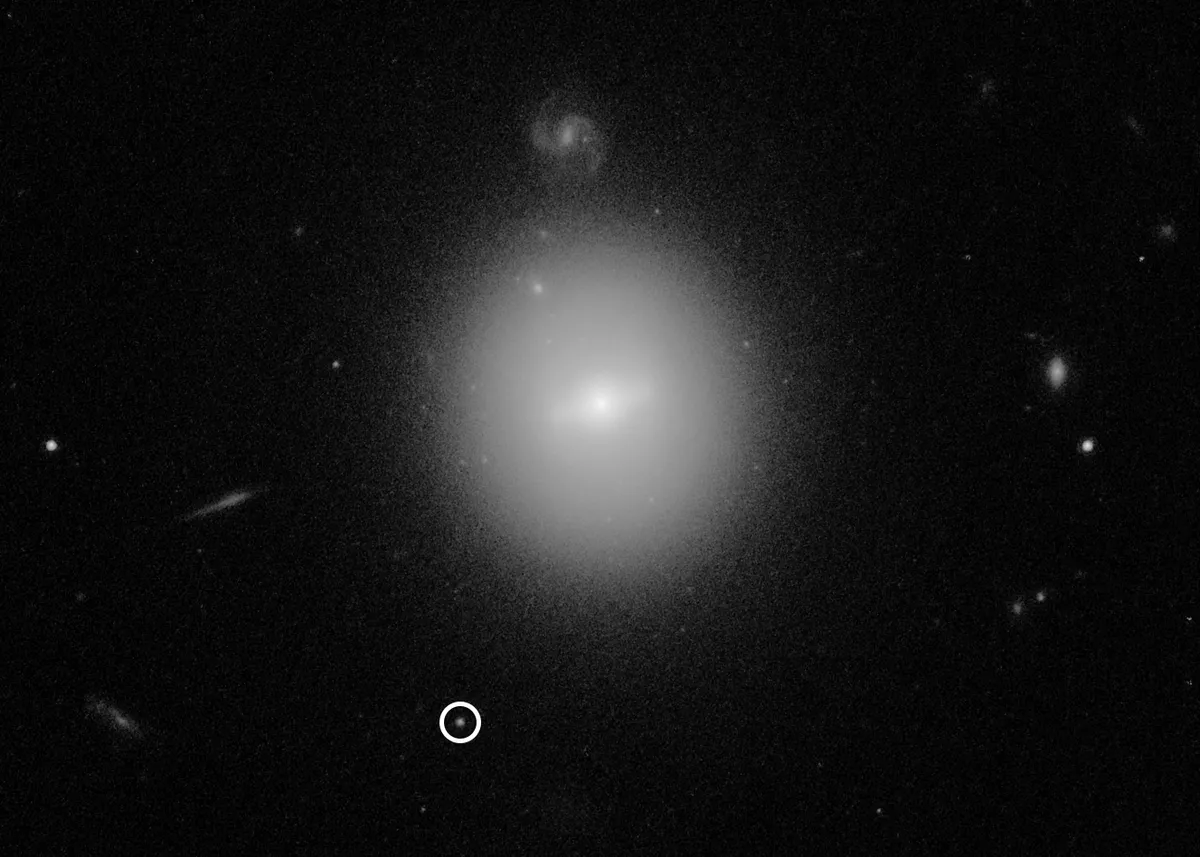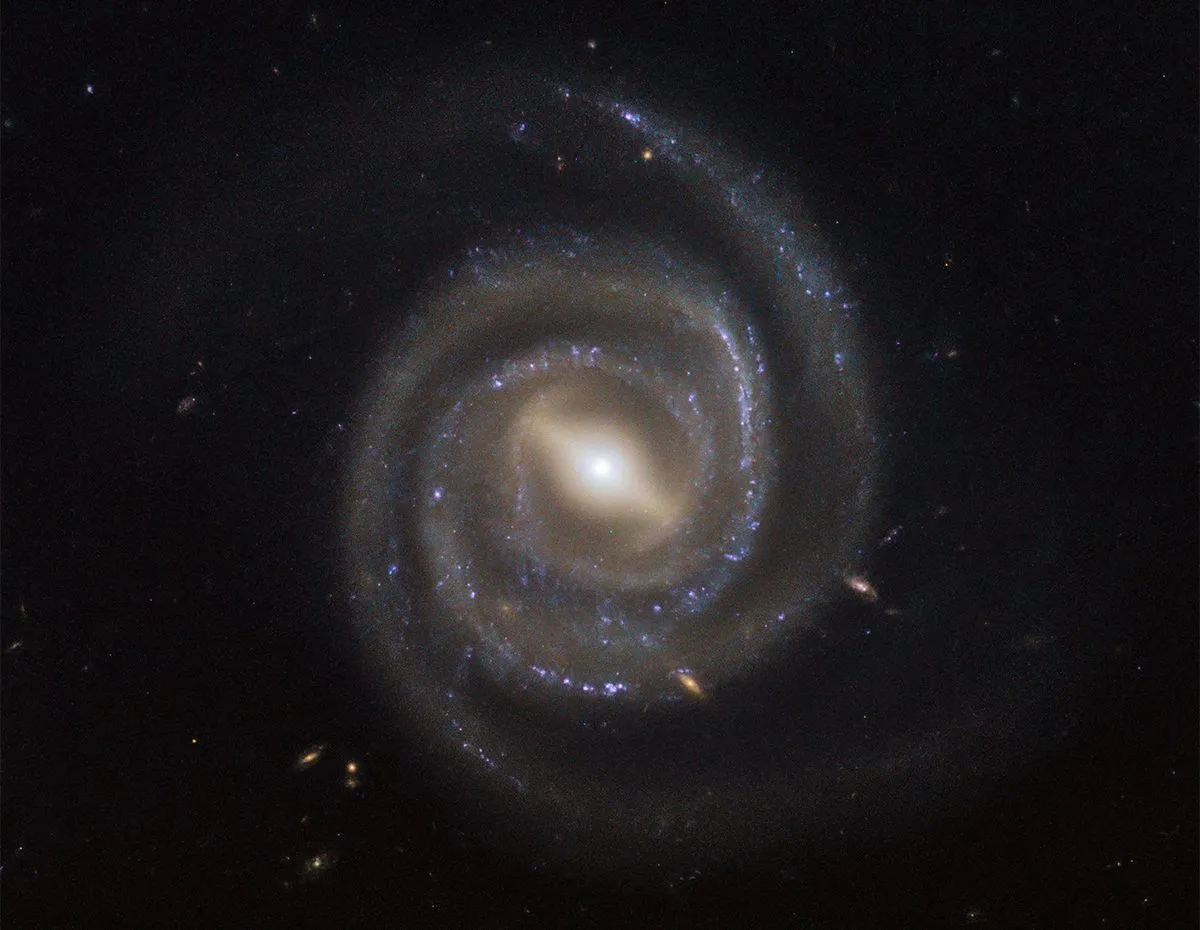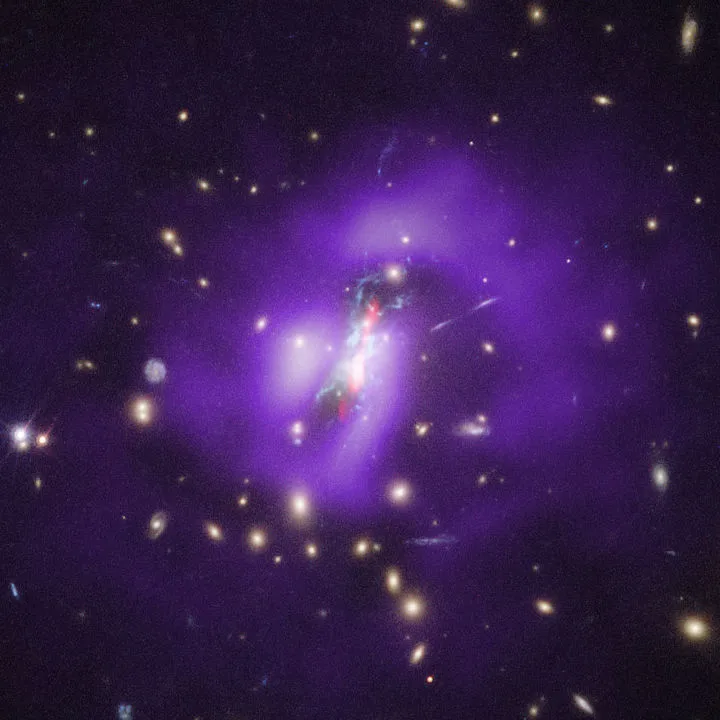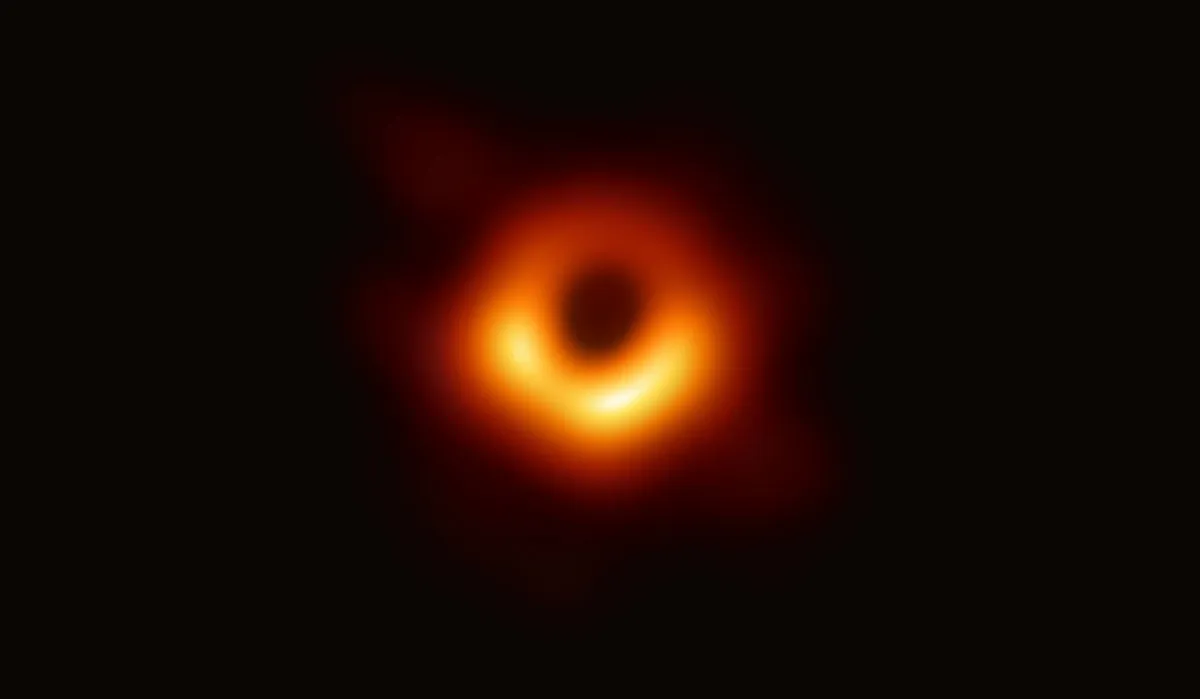A black hole is a region of the Universe where gravity is so extreme that it is impossible to escape from.
The closer you get, the faster you need to travel in order to successfully run in the opposite direction.
But get too close – past a boundary known as the ‘event horizon’ – and you’ll need to travel faster than the speed of light to flee.
As far as we know this is impossible and so your fate is sealed: the mega gravity of the black hole will tear you limb-from-limb in a process known as ‘spaghettification’.

According to our best theory of gravity, Einstein’s theory of general relativity, your spaghettified body would eventually end up at a ‘singularity’ – an infinitely small and dense point at the ‘bottom’ of the black hole.
Indeed, the very notions of space and time cease to exist at a singularity and any traces of you will be erased from the Universe.
Curious about black holes? Find out the answers to the biggest questions about black holes.
Who first thought of black holes?

The idea of a black hole is older than many people realise. As far back as the 18th century, Englishman John Michell wondered whether you could add enough mass to the Sun so that light wouldn’t be able to leave its gravitational clutches.
The first modern incarnation of a black hole appeared in a 1939 paper by Robert Oppenheimer, the famed leader of the Manhattan Project.
Called On Continued Gravitational Contraction, Oppenheimer speculated that if the core of a collapsing star has sufficient mass it would become what we now call a black hole.
The phrase ‘black hole’ itself wouldn’t appear for another three decades: it was coined by John Wheeler in 1967.
Circumstantial evidence for their existence arrived in the 1970s when astronomers saw intense X-ray radiation coming from the region around a compact object.
In the 1990s, we saw stars being flung around the centre of our galaxy in a way that suggests they’re orbiting a four million solar mass monster – only a supermassive black hole fitted the bill.
Finally, concrete evidence came first in 2015 when the Laser Interferometer Gravitational Wave Observatory (LIGO) detected gravitational waves from black hole collisions.

Then, in 2019, a network of radio telescopes, known as the Event Horizon Telescope, revealed the first ever image of a black hole to be captured, in galaxy M97.
Falling into a black hole is far from a desirable outcome, either for you or for the theoretical physicists who study black holes.
If space and time disappear in a puff of smoke then so does our ability to explain what’s going on.
Parts of a black hole

Event horizon
The radius around the singularity that forms the point of no return. Anything, even light, that falls within the event horizon will be trapped inside, hence the ‘black’ part of its moniker.
Accretion disc
A rotating disc of gas and dust caught in orbit around some black holes. It spins so quickly it can superheat, causing it to glow across the electromagnetic spectrum, including X-ray, optical, infrared and radio.
Photon sphere
Light emitted from the accretion disc is bent by the black hole’s gravity, forming a bright ring, known as the photon sphere, around the dark ‘shadow’.
Singularity
The centre of the black hole, containing all the energy and matter that fall within it, collapsing to form a region of infinite density. The laws of physics as we know them break down in this region.
Different types of black hole
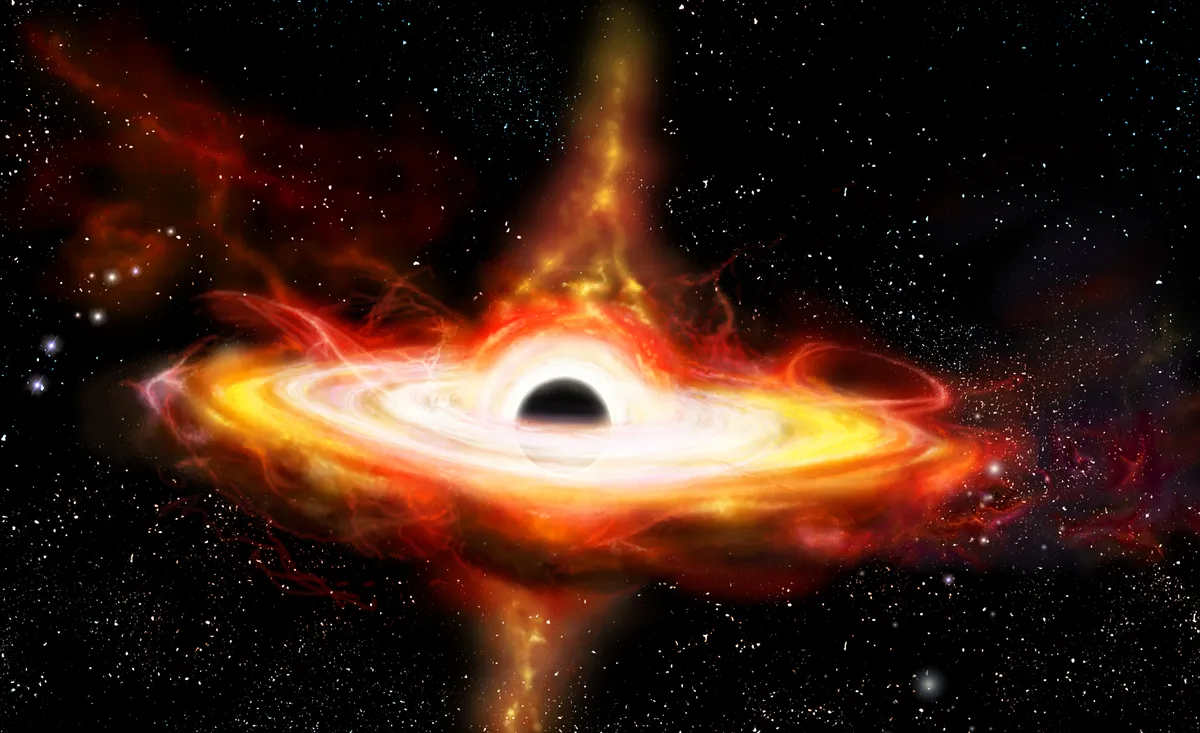
As with many other celestial bodies, black holes can be split into classes:
Miniature black holes
Still hypothetical, these black holes have a mass smaller than the Sun. They were first proposed by Stephen Hawking in 1971, who suggested they may have formed in the early Universe.Some experts claimed miniature black holes might appear in the collisions created by the Large Hadron Collider, but none has been detected so far.
Stellar-mass black holes
These black holes, between about 4 and 100 solar masses, are thought to be the most abundant of the four classes.Formed from the core-collapse of massive stars at the end of their lives, the closest known one is V616 Monocerotis.It is located about 3,000 lightyears away, and is between 9-13 times the mass of the Sun.
Intermediate-mass black holes
Ranging from 100 to 100,000 solar masses, only a handful of these black holes have been discovered. They have been proposed as the seeds of supermassive black holes.These titans could be formed by the merger of their smaller cousins.
Supermassive black holes
These can be anywhere from between 100,000 and 50 billion times the mass of the Sun. They exist at the heart of most large galaxies. Even the Milky Way has a supermassive black hole at its core, known as Sgr A*.Its 1974 discoverers, Bruce Balick and Robert Brown, added an asterisk to signify the discovery was ‘exciting’.Sgr A* is 4.1 million times more massive than the Sun.
How astronomers see black holes
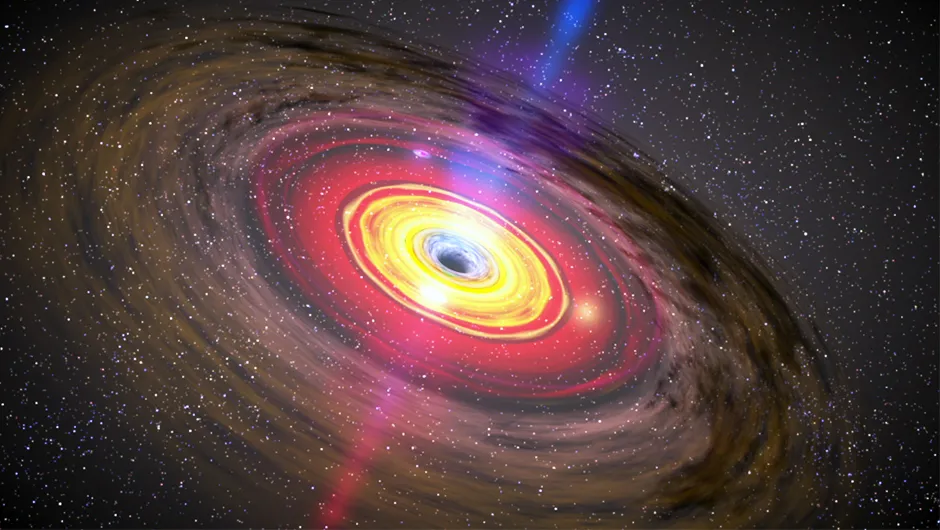
How do you see something from which not even light can escape?
One way of observing a black hole is by observing the accretion disk; a flattened band of gas, dust and other debris from a star that has come close to the black hole but not quite fallen in.
The particles within the accretion disk are accelerated to tremendous speeds by the black hole’s gravity, in the process releasing heat, X-rays and gamma rays, which can be seen by dedicated observatories.
By also measuring the orbit of the star around the hidden object, scientists can infer the latter’s mass and size, and thereby confirm it is indeed a black hole.
Using this technique, tens of stellar-mass black holes have been found.
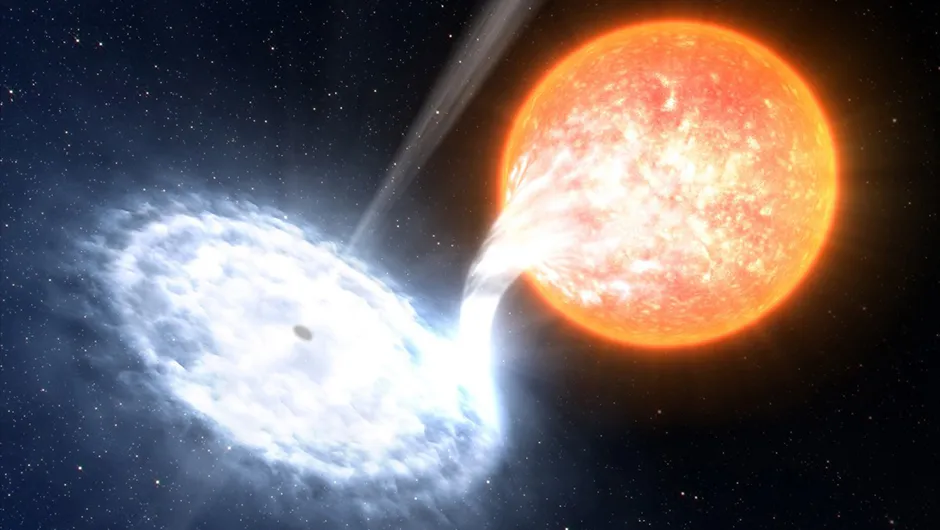
Similarly, many hundreds of supermassive black holes, which sit at the heart of most galaxies, have been discovered by observing the fast orbits of stars and gas, and seeing stars being literally torn apart by the strong gravitational field.
Our Galaxy has a black hole at its heart too, designated Sagittarius A*.
More recently, astronomers at the Laser Interferometer Gravitational Wave Observatory (LIGO) and the Virgo Interferometer have been using a technique called interferometry to detect gravitational waves.
These ‘ripples’ in the fabric of spacetime are caused by violent and energetic cosmic processes – which can be formed by the merger of two black holes.
With black hole detections only numbering in the thousands, you might assume that these objects are rare – vanishingly so, you might say.
Yet there are actually thought to be between 10 million and one billion black holes in our Milky Way alone.

General relativity and the event horizon
"A black hole is where the laws of general relativity break down," says Elena Giorgi, a postdoctoral research associate at Princeton University.
You can see for yourself the issues caused by an object with a significant mass but zero size. Just try dividing any number you like by zero on a calculator.
As Giorgi says: "It tells you that something isn’t right."
In the 1960s, Roger Penrose, the Nobel-prize-winning physicist and long-time collaborator with Stephen Hawking, proposed a solution to get around this embarrassing situation.
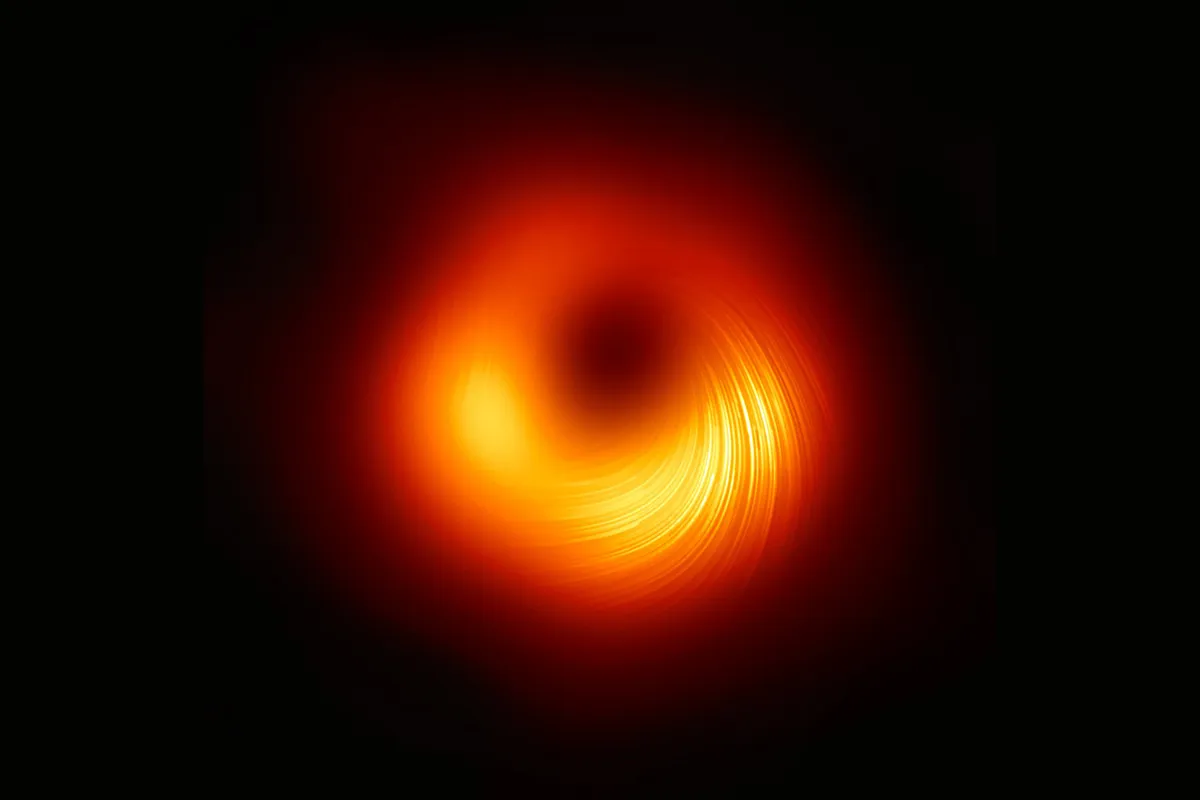
He said that a singularity must always be dressed with an event horizon; in other words, no 'naked' singularities are allowed.
It saves both the black hole’s blushes and our own, conveniently hiding a place we can’t explain behind a layer of clothing we can never see past, as no light can escape from inside the event horizon to show us what’s happening in there.
That way there’s no part of the observable Universe that general relativity can’t describe. This get-out-of-jail-free card is called the Weak Cosmic Censorship Conjecture (WCCC).
If you think the WCCC sounds a little too convenient – because, while an event horizon is understood mathematically, we aren’t 100% sure how it manifests physically – you could be right.
"There’s no proof of it," says Tomas Andrade, a postdoctorate researcher at the University of Barcelona.
The fact that general relativity appears to break down in the centre of a black hole suggests that there may be a deeper, more comprehensive theory of gravity out there we’ve yet to uncover, just as general relativity is a more accurate picture of gravity than Isaac Newton’s original work on the force.
Physicists exploring some of these alternative theories have found that black holes can actually be horizonless after all.
Reconciling quantum physics and gravity
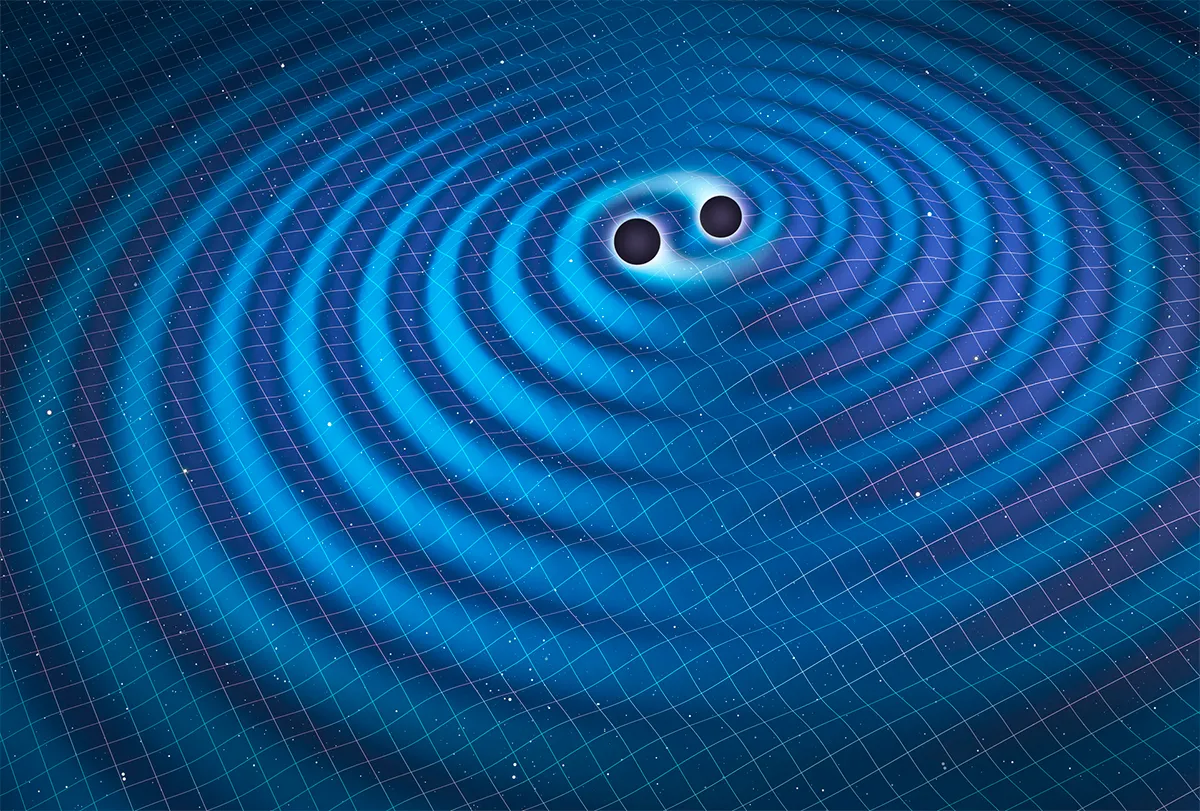
Many physicists believe that we’ll arrive at a more comprehensive theory of gravity if we can combine general relativity with quantum physics – the weird and wacky rules that govern atoms and the subatomic world.
To get these two landmark theories to play nicely together, physicists often have to assume that the Universe contains more dimensions than the four we experience in our day-to-day lives (three of space and one of time).
Andrade has recently discovered that it’s possible to rip an event horizon right off in a universe with a total of 6 or 7 dimensions of space. All you need is for two black holes to collide.
Thankfully, we already know that black hole collisions are commonplace – they created most of the gravitational waves we’ve detected in recent years with experiments such as LIGO in the US.
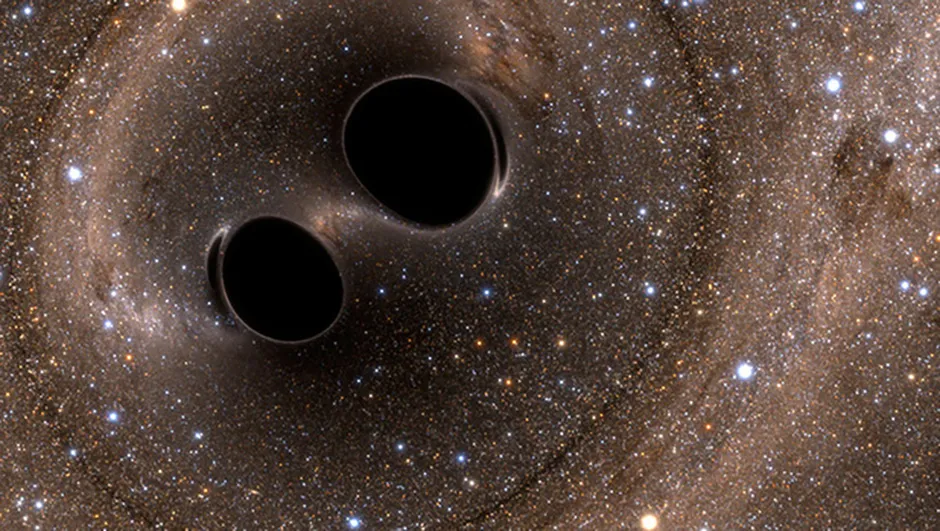
The two black holes merge into one after the collision, but Andrade found the force of the impact elongates the event horizon of the new black hole.
"It thins out and becomes unstable," he says.
The event horizon then fragments in a similar way to water separating into droplets as it emerges from a leaky tap. Before long the naked singularity underneath is exposed.
There were some pretty tight restrictions required to get this to work, though. The speed with which the black holes collided had to be not too slow or fast.
In addition, the black holes themselves had to be spinning fairly rapidly to begin with. Plus, of course, we don’t even know if the Universe really has extra dimensions.
"The validity of these modifications isn’t clear," says Giorgi.
Even if it does, it could prove hard to observe such collisions as gravitational waves - the only way we can currently detect such mergers – become suppressed in higher dimensions.
Hawking radiation and naked singularity
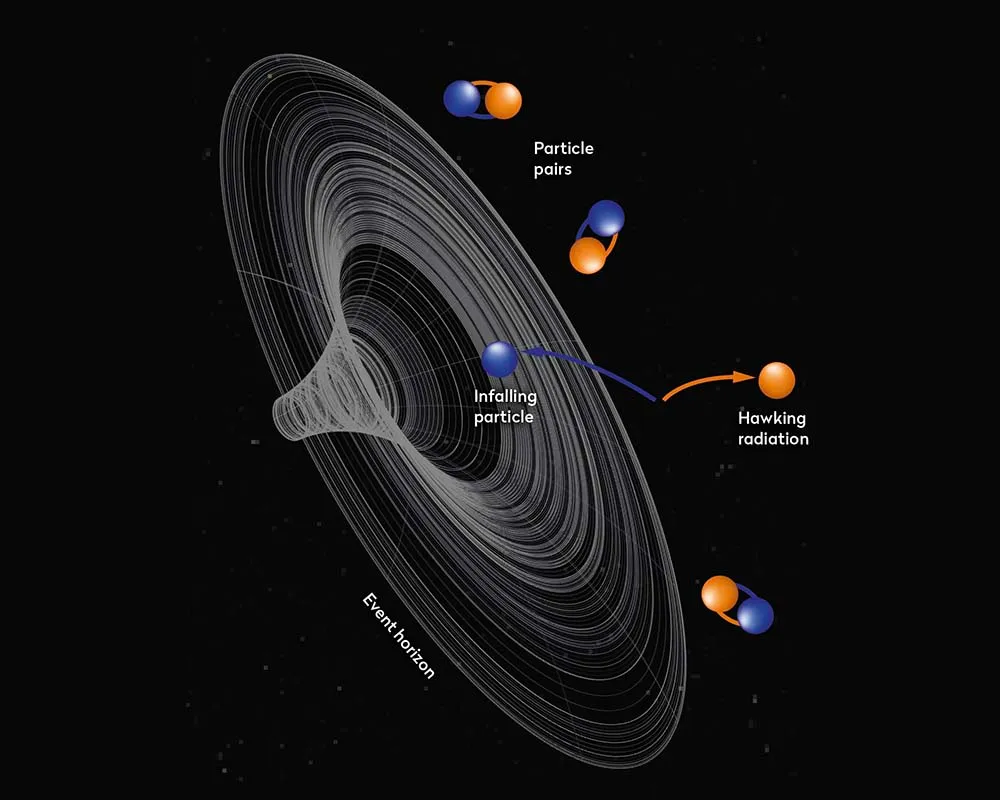
Black holes are many things: cosmic trap doors, gravitational behemoths and shredders of stars. But black holes are also bashful – they hate to be naked in public.
Black hole collisions aren’t the only way to whip away an event horizon. One of Stephen Hawking’s most famous ideas is known as Hawking radiation.
By leaking particles back into space, a black hole can very slowly evaporate away.
"The Hawking evaporation process may turn an electrically charged black hole into a horizonless naked singularity," says Professor Shahar Hod from Israel’s Ruppin Academic Center.
Except, Hod’s black hole is about as charged as it is possible to get.
But this could be a stretch, as any electric charge would be quickly absorbed by the clouds of material that gather around the event horizon.
That said, he argues that a highly charged black hole is equivalent to one that’s rotating very rapidly:
"Such fast-rotating black holes are expected to exist in the centres of galaxies."
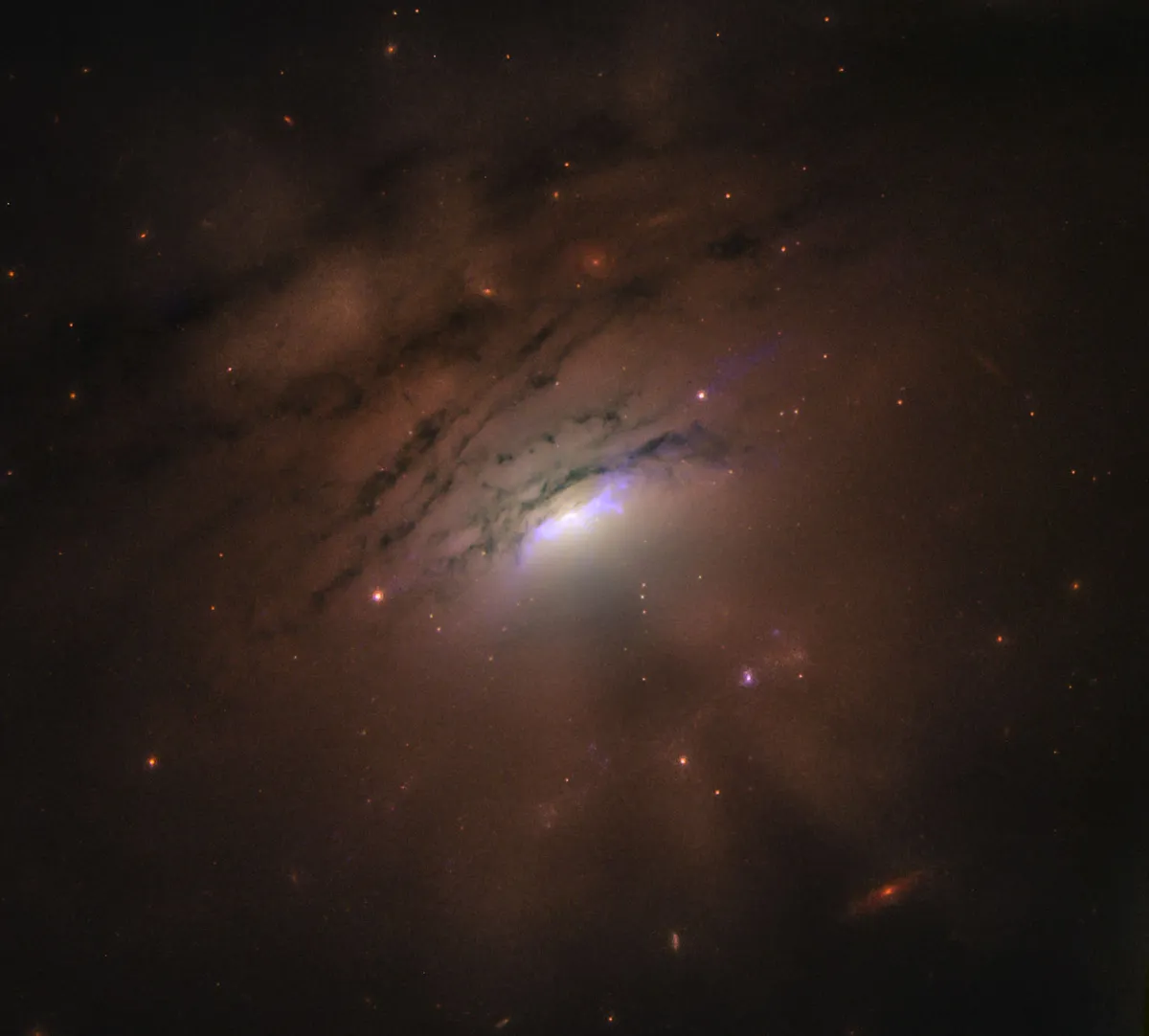
It may even be possible for a black hole to form without an event horizon at all – naked at birth, just like us.
A team led by Dr Yaser Tavakoli, from the University of Guilan in Iran, looked at the collapse of dust clouds in a theoretical five-dimensional universe.
They found that there was a mass threshold for the cloud, below which it would shrink to form what Tavakoli calls a "sudden singularity".
In other words, one that is freely visible to an external observer.
So it seems that there are a number of ways to achieve a naked singularity, particularly in theories of gravity that seek to go beyond general relativity.
If we’re to get an insight into which, if any, of these ideas is on the right track, finding a naked singularity would surely help.
According to Wei-Hsiang Shao, from the National Taiwan University, that could be tricky: a naked black hole does a pretty good job of masquerading as one cloaked with an event horizon.
He looked specifically at the shadows the black holes cast – dark zones around them caused by the extreme local gravity.
These shadows were made famous by the first ever photograph of a black hole taken by the Event Horizon Telescope in 2019.
The naked singularity’s shadow looked eerily familiar. "Features of the shadow closely resemble those of [an ordinary] black hole," he says in the paper detailing his research.

Fortunately, Dr Dipanjan Dey, from Charusat University in India, thinks there’s another way a naked black hole could reveal itself: by the way it affects stars orbiting around it.
He discovered that a black hole without an event horizon would cause the stars’ orbits to precess differently.
Precession is a common phenomenon in astronomy where the closest point an object gets to the thing it is orbiting shuffles round over successive orbits, creating an orbit that looks something like a spirograph might draw.
Dey has used this fact to predict the future paths of the stars orbiting around Sagittarius A*, the supermassive black hole in the heart of our Galaxy, the Milky Way.

Stars take a decade or more to complete one orbit around the black hole, and we only started looking in the mid-1990s, so we haven’t seen many stars complete successive orbits yet.
If our observations match Dey’s calculations in the years ahead, it could be the first direct evidence that a black hole can violate Penrose’s Weak Cosmic Censorship Conjecture.
And with it the door could be opened into alternative theories of gravity that may one day knock general relativity off its perch.
Images of black holes
What is a black hole? We asked the experts
Watch our interviews with expert astronomers and astrophysicists to hear about their research into black holes
